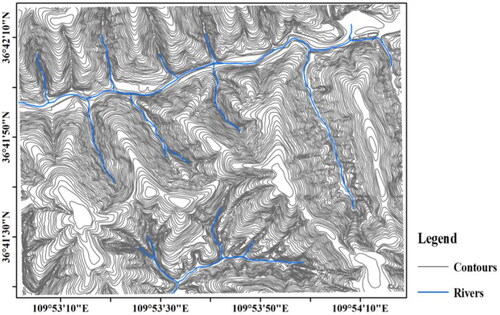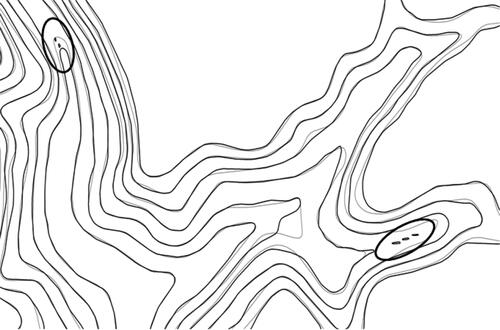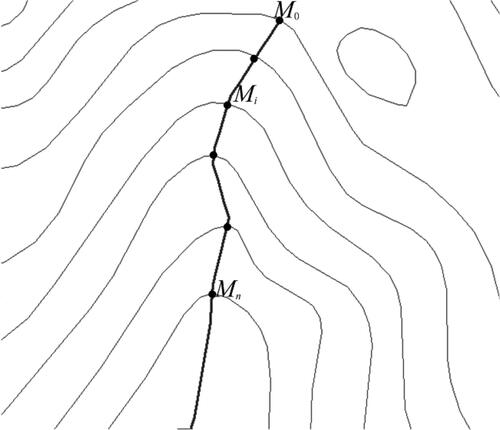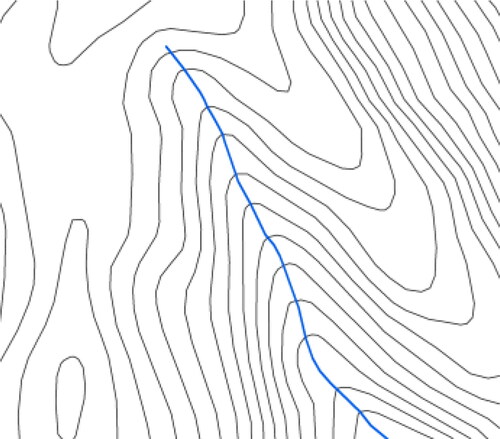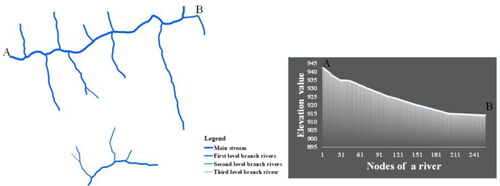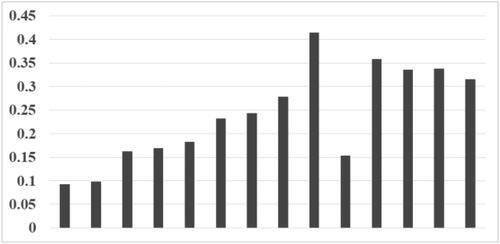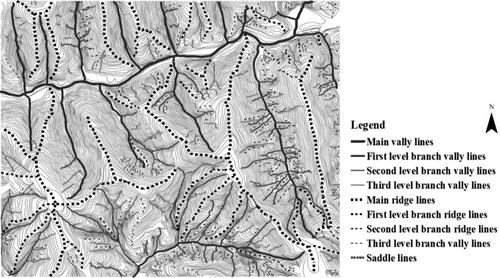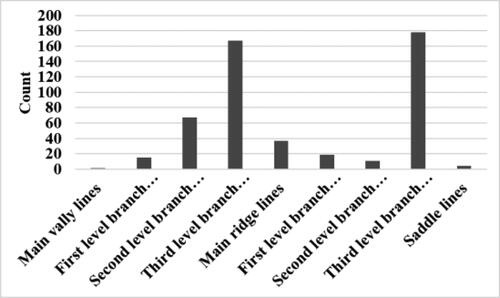Figures & data
Table 1. Identification rules for parts of river network morphologies.
Table 2. Classification of topographic feature lines.
Figure 4. Spatial coupling between valley lines and less developed rivers. (a) Rivers with lower headwaters; (b) the area of the valley floor where rivers protrude but do not develop; (c) valley line headwaters are served as river headwaters; (d) the valley lines in the convex region of the valley floor ‘replace’ the rivers.
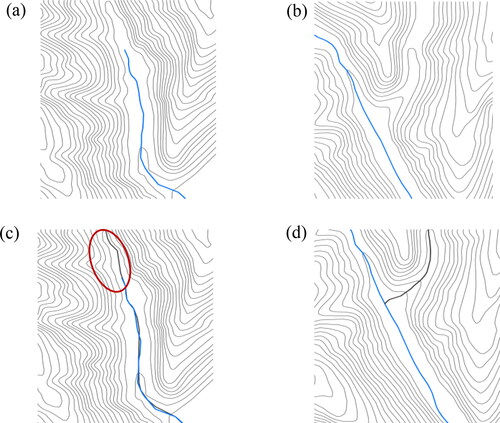
Figure 8. Bending division based on extreme points of line elements (Deng et al. Citation2013).

Table 3. Calculation results of river network parameters in the study area.
Table 4. Gentle probability distribution of topographic feature lines.
Table 5. Selection of topographic feature lines.
Table 6. Discretization information of each element.
Table 7. Semantic information description and weighted for discrete points of different types.
Figure 13. Generalization results of loess relief. (a) Integrated generalization results with a scale of 1:25000; (b) integrated generalization results with a scale of 1:50,000.

Table 8. Comparison of terrain accuracy information before and after loess relief generalization.
Figure 14. Comparison of shadow maps at different scales in the study area. (a) Original shadow map with a scale of 1:10,000; (b) shadow map with a scale of 1:25,000; and (c) shadow map with a scale of 1:50,000.
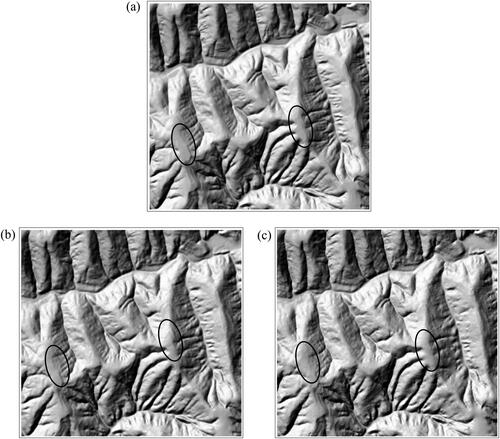
Table 9. Comparison of information volume before and after river reconstruction.
Data availability statement
The dataset utilized/analyzed during the current study will be available from the corresponding author upon request.

